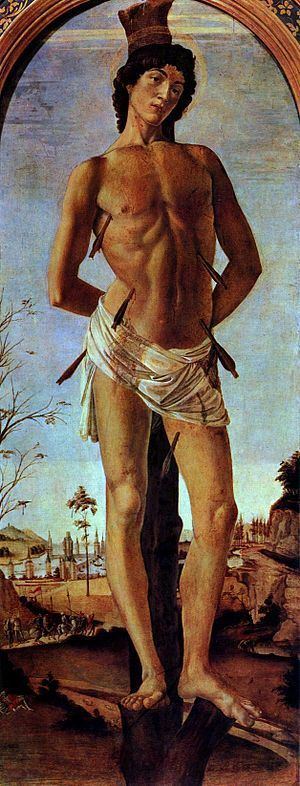Year 1474 Artist Sandro Botticelli Genre Christian art | Medium Tempera on panel Created 1474 | |
 | ||
Dimensions 195 cm × 75 cm (77 in × 30 in) Location Staatliche Museen, Berlin Periods Renaissance, Early renaissance Similar Sandro Botticelli artwork, Renaissance artwork, Christian art | ||
St. Sebastian is a painting of the eponymous Christian saint by the Italian Renaissance painter Sandro Botticelli, executed in 1474 for the Church of Santa Maria Maggiore, Florence. It is housed in the Staatliche Museen of Berlin.
Criticism and influence
Kenneth Clark considered this picture remarkable for its closeness to the spirit of harmonious repose found in classical sculpture:
There are several reasons why for fifty years or more Donatello's David had no successors... Another is the inherent restlessness of the Florentine temperament. Apollo is static. His gestures are dignified and calm. But the Florentines loved movement, the more violent the better. The two great masters of the nude in the late quattrocento, Pollaiuolo and Botticelli, are concerned with embodiments of energy or ecstatic motion, with a wrestling Hercules or a flying angel, and only once, in Botticelli's St. Sebastian, achieve a satisfactory nude in repose.
Rainer Maria Rilke's poem "Sankt Sebastian" (in Neue Gedichte, 1907) seems to have a close correspondence in description and mood to Botticelli's painting, as Rilke's translator J.B. Leishman and Jane Davidson Reid have observed.
